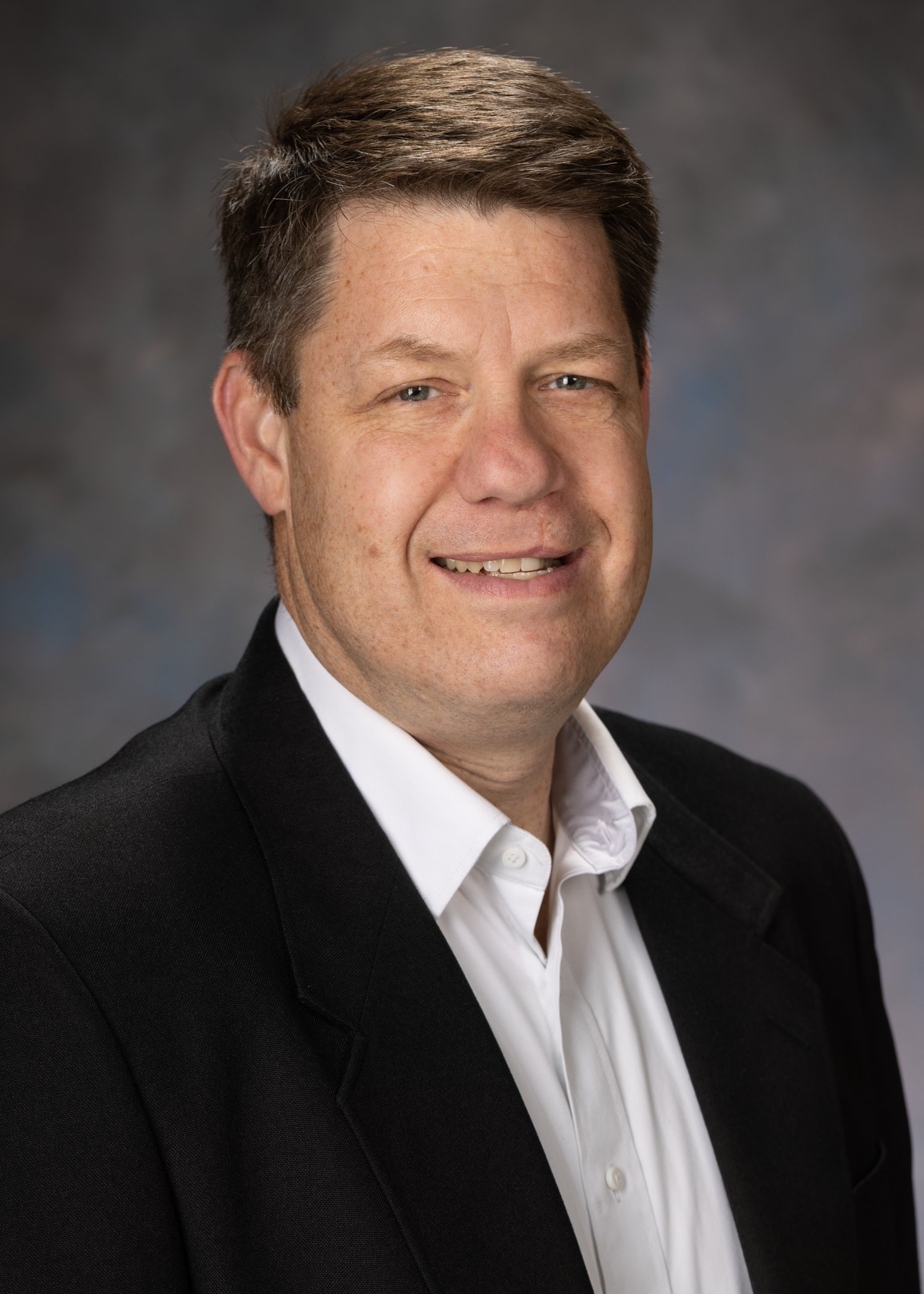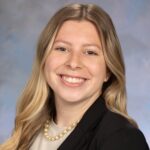Featured Researcher – Rolf Stottmann, PhD
Featured Researcher – Rolf Stottmann, PhD https://pediatricsnationwide.org/wp-content/themes/corpus/images/empty/thumbnail.jpg 150 150 Alaina Doklovic Alaina Doklovic https://pediatricsnationwide.org/wp-content/uploads/2023/11/100923RH0019-e1699635391623.jpg- February 19, 2024
- Alaina Doklovic
Rolf Stottmann, PhD, is a principal investigator in the Institute for Genomic Medicine at Nationwide Children’s Hospital and professor at The Ohio State University College of Medicine. He joined Nationwide Children’s in 2021.
Dr. Stottmann has an unwavering interest in the genetics of structural birth defects. He is especially focused on structural brain malformations and disrupted craniofacial skeletal development. His lab uses a combination of human and mouse genetics to identify and study rare genetic variants which cause these congenital malformations. The lab employs CRISPR/Cas9 genome editing technology, molecular embryology, animal models, and induced pluripotent stem cells (IPSCs) to understand how these variants lead to malformations. They are currently collaborating with clinical partners and actively enrolling in research protocols in these areas.

“Our research program is focused on understanding the genetic basis of development and disease of the brain and face. We try to learn the genetic code that guides development of the most complex organ in the universe – our brain – and the structures that the support the brain and help us communicate with the world – our face,” says Dr. Stottmann.
As part of this work, the Stottmann Lab is pursuing a number of collaborations across the hospital and with institutions around the world. The complementary tools of genome sequencing, CRISPR genome editing, animal models and stem cell technologies offer almost limitless chances for discovery.
Read on to learn more about Dr. Stottmann’s work and research career.
Why did you decide to pursue a career in your field?
My first exposure to science was in developmental neuroscience and I was really drawn to how visual this area of science is – that we can actually see our results when we are doing cellular and animal models of developmental biology. For example, we can see a brain that is not the right shape, or we see a mouse that has a syndrome that looks very similar to how it does in a person. I’ve just always liked the visual gratification of what we do.
I actually did my master’s thesis as part of my journey of figuring out what I wanted to do “when I grew up,” intending to prove to myself that science was really boring being trapped under the fluorescent lights of a lab. But I got super lucky with my first lab and had a really positive experience and learned how fun and exciting working in a lab could actually be.
What was your path to your current role?
I took a traditional academic route. After college, I did a two-year thesis master’s program and right as I was finishing up, my then principal investigator got a grant and asked me to stay for a year as his full-time research technician lab manager with the idea that we would be able to publish my paper and have that in press when I applied for graduate school. He helped me identify some grad programs that would be interesting and then I went off for my PhD with the goal, at that time, to learn to use mouse models and go into industry to do preclinical modeling of human disease. After that, I did a traditional academic post doc in Boston learning how to do gene discovery in mice. That led to my first faculty position in the Division of Human Genetics at Cincinnati Children’s Hospital. I then moved to Nationwide Children’s in the summer of 2021.
Why did you decide to pursue your work at Nationwide Children’s?
I started thinking about where I wanted to go with my career after establishing and running the lab for eight or nine years, around the time I think a lot of people do this soul searching. I had gotten tenure and was on the verge of my next promotion and was thinking about where I wanted to take my career, what the barriers to success were where I was, and what opportunities I might find elsewhere. I just started to look around and ask how other places were confronting the challenge to do genomics in the context of childhood disease. That’s when I became aware of the huge investment in genomics at the Institute for Genomic Medicine at Nationwide Children’s Hospital.
Fun Facts About Dr. Stottman
What do you usually eat for breakfast?
Most days it’s yogurt with granola and some fresh berries.
What would be your dream job if you could do anything (that wasn’t working in research)?
I would be a contractor specializing in interior woodworking like cabinet making and finishes. I’ve really enjoyed wood working over the years. Doing stuff with my hands to sort of free up my brain is pretty relaxing. My other answer would be an economist or CPA. I’ve always sort of liked spreadsheets and financial management.
Favorite music?
Oh, 80s rock – back when music was still good. That’s an easy one!
Favorite way to relax?
We are very fortunate to live right next to Alum Creek State Park, so I like to take our dog for a long walk with some of the family or go for a run by myself. A bourbon old fashioned is also a recent discovery that’s never failed me.
What’s your favorite food?
I’m a sucker for a nice surf and turf – like a nice steak with shrimp or a lobster tail and a baked potato.
When it became clear that my passion for genomics of development was shared at Nationwide Children’s, and that they had already made a large investment in that passion, I knew it’s where I wanted to be. It’s one thing for an institution to say they think genomics is really important but it’s another thing to build a building and an institute and hire world leaders to lead that institute. Once I saw and could feel that insurmountable commitment to what I was interested in, I just had to be a part of it.
So far, it’s been two and half years at Nationwide Children’s and everything is going well. I’m looking forward to being a part of the continued growth at this institution.
What is your favorite part of your job?
I still love seeing the data – when someone comes and knocks on my door and says, hey, do you have a minute to come to my microscope? I practically run to the lab to see what it is they want to show me because I still love seeing new phenotypes for the first time.
How does your research serve our patients and our community?
Through research sequencing and experiments in the lab that follow up on our hypotheses, I think the first thing we can give families is the answer to the question “Why did this happen to us?” I think we know, and the community around us knows, the true power in being able to give answers to those families. It doesn’t change what has happened to them or what might happen to them, but it allows them to hang their struggles on a different framework and even meet other people who are in a similar journey as them. One of the most exciting things we have done is use basic science principles to design an intervention that is working in an animal model. Now we want to see if that is something worth trying and take all the way back to the clinic for the next generation of children who may be born with the same genetic condition. The goal is always to help our patients, their families, and the generations of children that come after them.
About the author
Alaina Doklovic is a Marketing Specialist for Research Communications at Nationwide Children’s Hospital. She received her BS in medical anthropology and English from The Ohio State University. Her passions for science and health, combined with her desire to help others, motivated her to pursue a career in which she could actively help improve patient outcomes and scientific research through writing.
-
Alaina Doklovichttps://pediatricsnationwide.org/author/alaina-doklovic/September 19, 2023
-
Alaina Doklovichttps://pediatricsnationwide.org/author/alaina-doklovic/January 22, 2024
-
Alaina Doklovichttps://pediatricsnationwide.org/author/alaina-doklovic/February 12, 2024
-
Alaina Doklovichttps://pediatricsnationwide.org/author/alaina-doklovic/March 19, 2024
- Posted In:
- Featured Researchers





